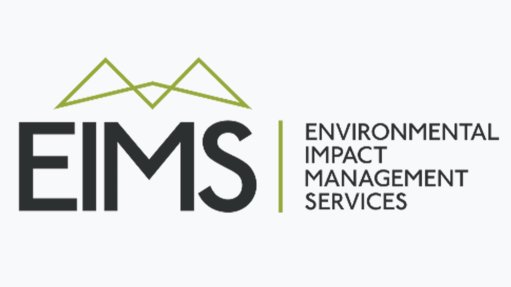Economics of body weight
The increased availability and consumption of unhealthy foodstuffs in South Africa – as is the case in many countries – has fuelled what one can only call an obesity or overweight epidemic, what with about half of all adults being sdudlas, a risk factor for heart disease, diabetes, cancers and other noncommunicable diseases.
Female South Africans are bearing the brunt of this ‘epidemic’, with the prevalence among them having been found to be a worrying 68% in one study.
It’s little wonder, then, that the Department of Health in July invited public comment on regulations for front-of-pack labelling on food packaging that provides information about nutritional quality. The proposal is that food products that contain added saturated fat, added sugar or added sodium that exceeds cut-off values must have a warning label. This, it is hoped, will enable consumers to make healthier food choices.
The proposed move has international precedence, with Singapore having been a trailblazer when it made front-of-pack labelling mandatory back in 1998. Thailand followed suit in 2007, with Ecuador and Indonesia jumping on the bandwagon in 2013 and 2014 respectively. Other countries that now have similar regulations are Chile, Mexico and Colombia.
According to Sameera Mahomedy, a law and policy researcher at the Centre for Health Economics and Decision Science at the University of the Witwatersrand, the evidence from countries that have gone the labelling route has been supported in South Africa, where consumers have been shown to have a positive attitude towards warning labels on ultra-processed foodstuffs and beverages.
As I have stated, being overweight or obese increases the risk of developing noncommunicable diseases and thus the odds of dying early – unnecessarily. There is an economic cost too, with the burden borne by the affected individuals, their families, governments and businesses in the form of healthcare costs and productivity losses.
The total costs run into billions of rands. This is not a thumb suck. A study conducted in this country found that overweight and obesity costs in South Africa totalled R33.19-billion in 2020, which represents 15.38% of the yearly national health budget and is equivalent to 0.67% of gross domestic product. The study was published in September last year in Global Health Action, a peer-reviewed open- access journal that publishes research on global health issues.
The yearly average cost of overweight and obesity to individuals was estimated at R2 769. This, however, is lower than a previous estimate by a key player in the South African private medical scheme industry that, on a yearly basis, an obese patient incurs an extra healthcare cost of R4 400. In other words, the per- patient yearly overweight or obesity cost in the public healthcare sector is about 60% of the cost in the private healthcare sector.
Of the total overweight and obesity cost of R33.19-billion in 2020, diabetes accounted for R19.86-billion; cardiovascular diseases R8.87-billion; diseases that affect bones, joints, muscles and connective tissue R3.35-billion; digestive diseases R395-million; respiratory diseases R360-million; and cancers R352-million.
These costs arise from medication, laboratory tests, imaging, consultation, hospitalisation and specific types of treatment, such as chemotherapy and radiation therapy.
The study focused on individuals who sought care in South Africa’s public healthcare sector and, using data sources such as the General Household Survey (GHS), the Global Cancer Observatory and 2020 midyear population estimates, the researchers were able to estimate the number of South Africans aged 15 and above who make use of public healthcare facilities.
The overweight and obesity prevalence rate was calculated from the National Income Dynamics Study, a face-to-face longitudinal survey that has tracked income, labour- market participation, health and nutrition as well as other democratic information since 2008. The GHS, a nationally representative cross-sectional survey that tracks health and other variables, provided prevalence rates for cardiovascular diseases and other noncommunicable diseases.
This South African study is not an outlier – its results are similar to those of previous studies conducted in high- and middle-income countries, including South Korea, Thailand and Colombia.
Considering the burden imposed by obesity – including on the economy – the push for warnings on food packaging is spot-on.
Article Enquiry
Email Article
Save Article
Feedback
To advertise email advertising@creamermedia.co.za or click here
Comments
Press Office
Announcements
What's On
Subscribe to improve your user experience...
Option 1 (equivalent of R125 a month):
Receive a weekly copy of Creamer Media's Engineering News & Mining Weekly magazine
(print copy for those in South Africa and e-magazine for those outside of South Africa)
Receive daily email newsletters
Access to full search results
Access archive of magazine back copies
Access to Projects in Progress
Access to ONE Research Report of your choice in PDF format
Option 2 (equivalent of R375 a month):
All benefits from Option 1
PLUS
Access to Creamer Media's Research Channel Africa for ALL Research Reports, in PDF format, on various industrial and mining sectors
including Electricity; Water; Energy Transition; Hydrogen; Roads, Rail and Ports; Coal; Gold; Platinum; Battery Metals; etc.
Already a subscriber?
Forgotten your password?
Receive weekly copy of Creamer Media's Engineering News & Mining Weekly magazine (print copy for those in South Africa and e-magazine for those outside of South Africa)
➕
Recieve daily email newsletters
➕
Access to full search results
➕
Access archive of magazine back copies
➕
Access to Projects in Progress
➕
Access to ONE Research Report of your choice in PDF format
RESEARCH CHANNEL AFRICA
R4500 (equivalent of R375 a month)
SUBSCRIBEAll benefits from Option 1
➕
Access to Creamer Media's Research Channel Africa for ALL Research Reports on various industrial and mining sectors, in PDF format, including on:
Electricity
➕
Water
➕
Energy Transition
➕
Hydrogen
➕
Roads, Rail and Ports
➕
Coal
➕
Gold
➕
Platinum
➕
Battery Metals
➕
etc.
Receive all benefits from Option 1 or Option 2 delivered to numerous people at your company
➕
Multiple User names and Passwords for simultaneous log-ins
➕
Intranet integration access to all in your organisation














